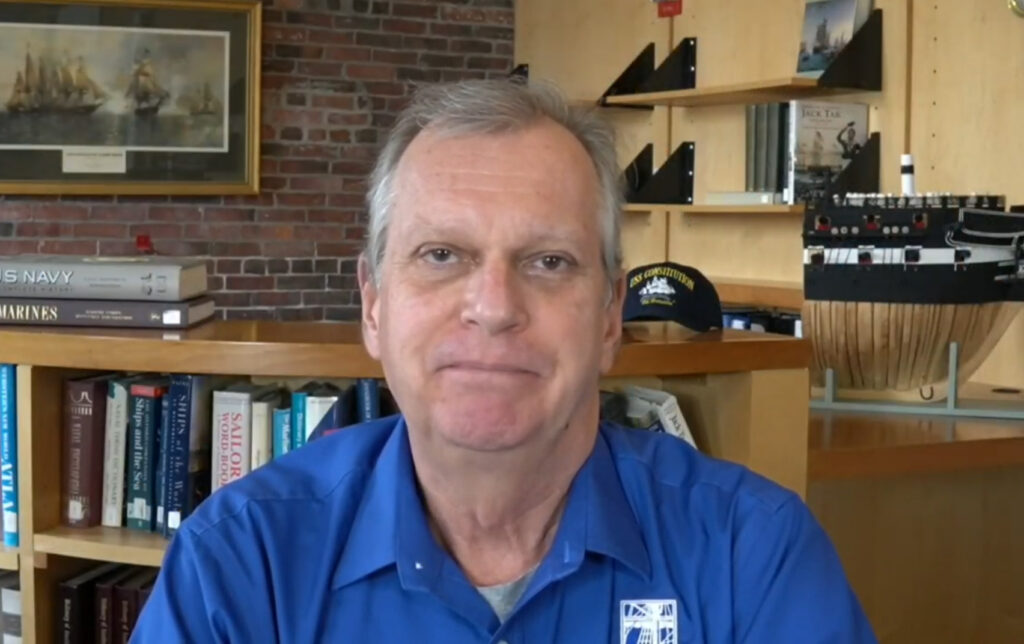Off the Deaton Path would like to introduce our readers to some of the scholars researching in the Georgia Historical Society’s newly expanded and renovated Research Center. This week we’ll spotlight Dr. Carl Herzog, Public Historian at the USS Constitution Museum in Boston, Massachusetts.

Tell Us About Yourself: I came to a career in history a little later in life, so my career path has been a bit different. I’m originally from South Florida, did my undergraduate in journalism at the University of Florida, and started life as a newspaper reporter. Then I ran away to sea on a tall ship. I ended up spending a long career working as an instructor and deck officer on traditional sailing ships conducting college semesters-at-sea and other educational programs. I taught traditional seamanship, celestial navigation, and maritime history. I really enjoyed the history aspects of that work and eventually decided to go back to school. I earned a master’s from the University of Rhode Island and a doctorate from the University of Massachusetts, Amherst. For the last five years, I’ve been the public historian for the USS Constitution Museum in Boston, a position that combines a lot of my previous sailing-ship knowledge and skills with public history and historical research.
Tell Us About Your Current Project: USS Constitution’s framing is made of southern live oak timbers that originally came from St. Simons Island. To supplement the workforce of New England timbermen, the Navy initially hired enslaved people from the plantation owners whose property the trees were coming from. So, some of the timbers that still make up the ship today were made possible by enslaved people. One of the missions of the USS Constitution Museum is using the ship as a lens to explore broader topics of maritime history and the American experience. We wanted to explore this story in more detail, learning what life on the coastal islands was like for enslaved people at the time, and learn more about the property owners who provided this enslaved labor as well as the trees to the fledgling U.S. Navy. A grant from the Massachusetts Foundation for the Humanities funded my travel to come to Savannah and a couple other archives as well as visiting the St. Simons properties where the timber was cut. The immediate result of this round of research will be a report that helps inform our future programming and exhibits on this topic.
What Are you Finding at GHS? GHS is home to a diverse range of collections and assets that have been profoundly helpful with this work. The collections of St Simons property owners, Leake, Hamilton, and Couper have all provided insight into the nature of life during a pivotal time of transition on St Simons Island. The property owners were eager to clear live oaks off their land in order to begin planting sea island cotton, a cash crop that quickly came to dominate the island and led to a boom in its enslaved population for the first half of the 19th century. The plantation journal of Richard Leake (MS 0485), in particular, helped me confirm his personal engagement with the Navy captains sent to Georgia to oversee the timber work. In addition, a number of early secondary sources and GHS’s collections of research papers of those authors have provided context and details on others involved in the Navy’s work. It also provided an interesting window into the growth of local pride and legends surrounding the region’s role in contributing to the construction of Constitution. As a result, my work at GHS has been able to greatly inform my visits to St Simons as well as initiating new threads of ongoing research at the National Archives.
